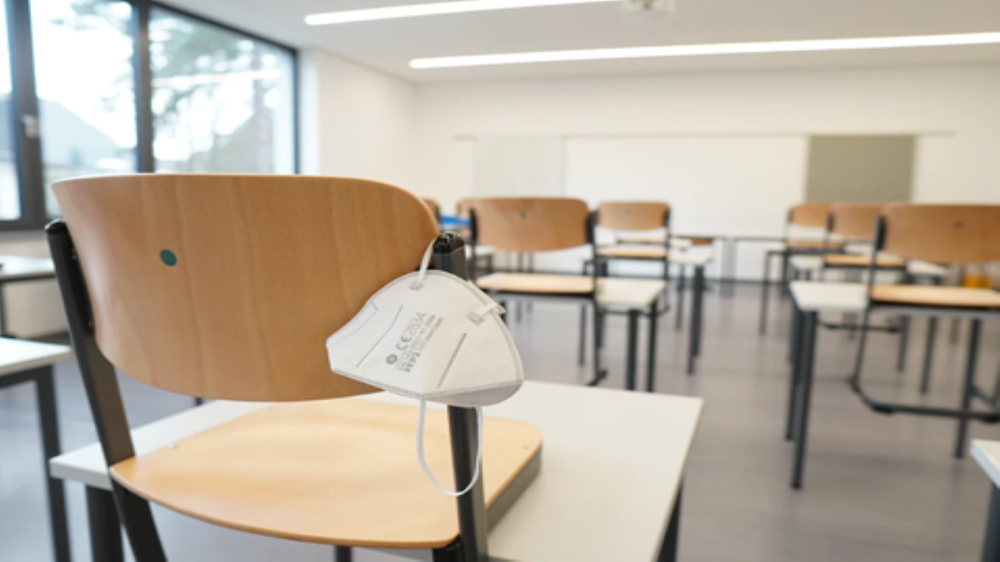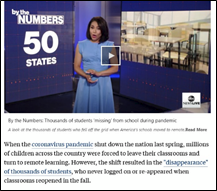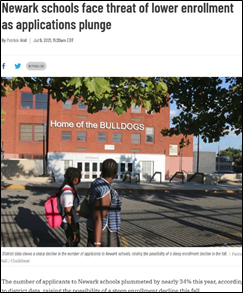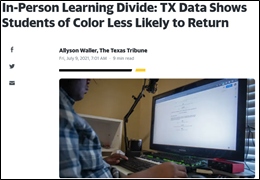Facts about the national map of which district is “back to normal” and which isn’t are hard to put together, but the entirety of “normal” itself is in question. It’s also way-to-obviously being obfuscated publicly what’s been going down.
Here are a couple of facts indicative of the average happenings which colorfully show the huge frictions, and which the Learning Counsel Research has supplemented with national surveys to give us a better picture so we can project what district leaders must do:
1. Students are still missing by the millions from previous enrollments. Just California had over 160,000 students “unaccounted for” and based on mass media advertising from big online entities wooing to take away more students in that state, the loss to alternatives and homeschooling is continuing and accelerating. Also, the “unaccounted for” is misleading because parental statements of enrollment elsewhere or homeschooling could be ten times that. 160,000 is just who they can’t find! Arizona had 38,500 not re-enroll. Carry those representative numbers across nationally and the mass attrition is no joke.
Click Picture for Original Story
2. In Newark, just 40 percent of district families opted for in-person learning. Other areas across the nation are citing similar data and administrators are getting the feeling that flexibility better happen for students or else.
Click Picture for Original Story
3. There is a racial divide becoming evident in the opt-outers, favoring minorities who want more remote learning and do not want to go to campuses. This is the exact opposite of what most people think is happening.
Click Picture for Original Story
K-12 schooling has never been less normal than it is right now. What’s difficult to communicate is the depth of the difference since the pandemic, and the height of the potentialities now. Whoa, the vastness.
It’s incredible when you truly understand what’s going on in education and where it is really going. This is only really possible when you are not nose-to-the-grindstone in the daily rituals of running a school or a district. That is to say, how most people operate, and running schools is no different, is their starting point is what is already there. It’s a characteristic human deficiency to be unable to see what’s not there. Humans can only do that if they are continually observing wider context.
Our research observations indicate that the greater context of what’s not there yet are these things, but there are many more:
- Boards and Superintendents who have a clue that they’re in the middle of an attrition war. There are only a handful that truly get this so far. The mandating of all students to be on campus again is now causing untold frictions because the pandemic proved another way, even if that way was sort of wonky and plagued with achievement losses for some. It was all a demonstration project of a highly flexible and altered structure that could be.
- Superintendents who have a quality grasp on what the end-game of digital transformation is supposed to do for them. Hint: it’s not tech added to teachers and classrooms only and it’s definitely not the old age-batching into grades-courses-classrooms model, and it’s also not “fully online and remote” only. No, it’s something new. (We used to call it the “uberization of learning” but now it’s Hybrid Logistics.)
- School and district willingness on a wide scale to do the tough grind of putting in place all the systems and integrations and sweat-of-the-brow workflow diagramming to truly transform.
- A way to make teachers humanly capable of all-tech-all-the-time while being 100 percent human and able to personalize for every single child within the current construct of “schooling.”
Again, with rare exception, these things do not exist: awareness of attrition war, grasp of transformation structure, willingness to toughen up and do real workflow and integrations, and real personalization with perfected human/tech blend.
With all that said, here is what is happening to do something about the state of things.
1. Randa Solutions is helping figure schools, districts, and states out for cumbersome processes being streamlined so that the real transformation can occur. They’ve even built a platform for teacher effectiveness that is essential for all schools in the middle of this massive shift right now.
They are particularly mentioned because they aren’t building software to the past structure, but a company fully cognizant of the future of schooling being structurally entirely different than it has been.
2. The EduJedi Leadership Society has three major projects under way to turn things around.
- Starting in August, 22 Activities, one-hour meetings, with leaders across the nation. Called the “Foundations of K-12 Reimagination” events, these are not your “turn-round” old-school folks, this is the full immersion into the parts of digital transformation for real. The best analogy was said perfectly by a Washington D.C. area administrator a couple years ago when she stated that the future is different for schools in a similar way to what happened in retail, “Don’t be like Sears, be Amazon.”
- The EduJedi have also organized eight courses and seven professional development games that go with them or can be played separately that give leaders as well as teachers a chance to see the bigger picture of where digital transformation is going.
- The EduJedi are also part of behind-the-scenes ongoing discussions about the Hybrid Logistics Project, a planned demonstration of the ultimate in teaching and learning logistics that “uberizes” for 100 percent personalization in the same way that ordering a ride on Uber gets you specifically to your destination. It’s not an LMS. Solicitation of more schools and districts participating in the vision have just started.
Make your profile and log-in to Knowstory to comment back to me. I’m the “first friend” to everyone in the Knowstory social media app for education.
About the author

LeiLani Cauthen is the CEO and Publisher of The Learning Counsel. She is well versed in the digital content universe, software development, the adoption process, school coverage models, and helping define this century’s real change to teaching and learning. She is an author and media personality with twenty years of research, news media publishing and market leadership in the high tech, education and government industries.













